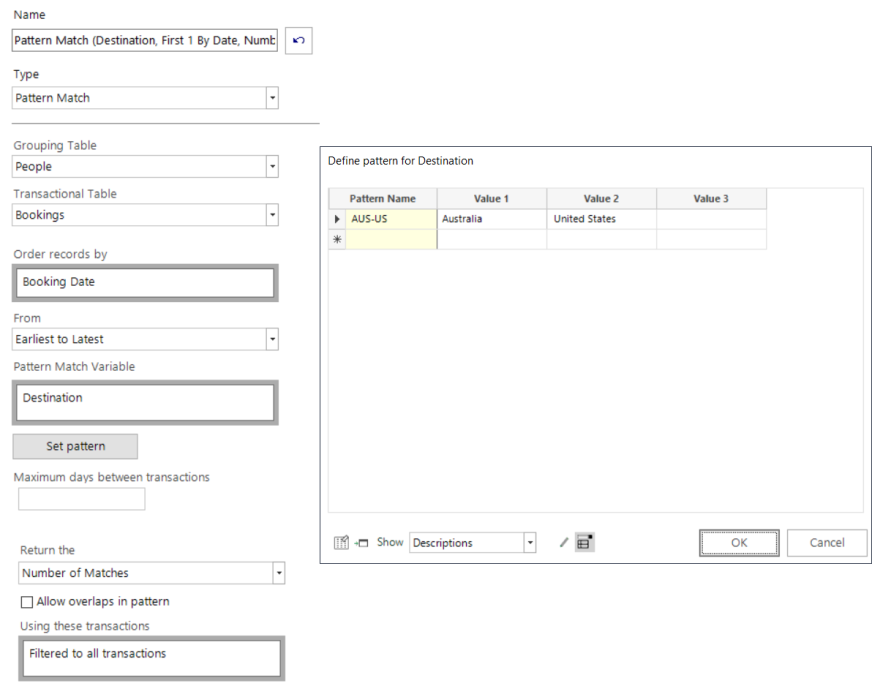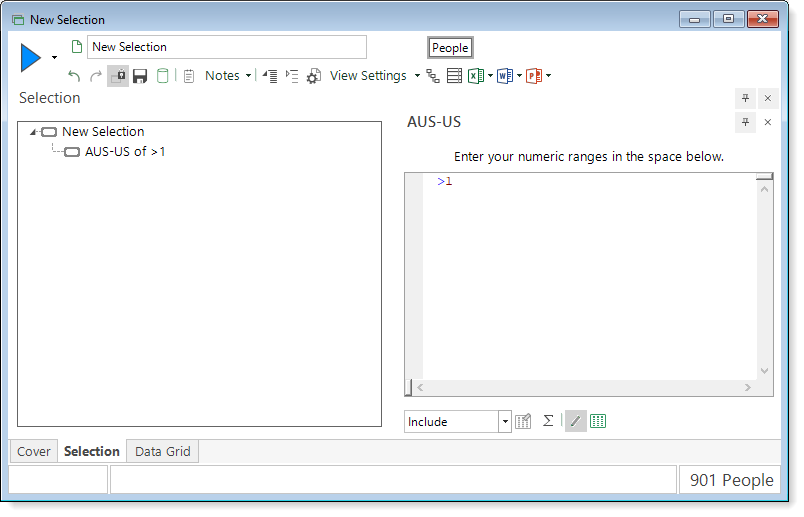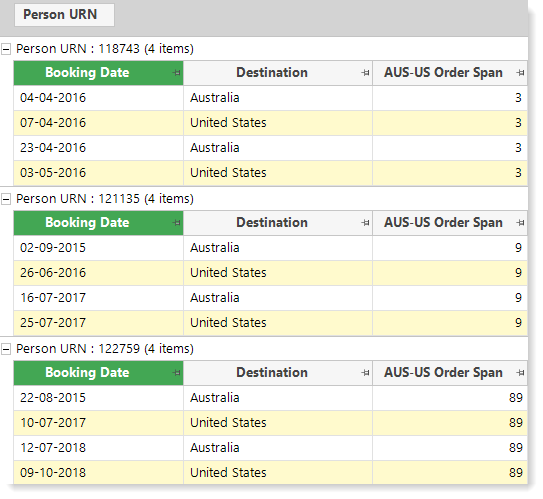Expressions: Aggregations On The Fly - Pattern Match Any Matched Pattern
The Pattern Match function allows you to specify a set of transactional patterns in order of priority, and then identify records with that same pattern of transactions. We might, for instance, want to find people who have purchased 3 of the same policies consecutively; alternatively, you may be interested in people who have purchased Policy A, then B, then C and finally D.
In FastStats releases prior to Q4 2019, this functionality worked on a ‘first matched’ basis, returning the first occurrence of the specified pattern.
• It is now possible to find any matched pattern as opposed to the first matched pattern
For example, you might want to identify the second occurrence of the matched pattern or, perhaps, the most recent.
This feature now allows you to specify:
• the order in which patterns match (e.g. first or last)
• the number of the pattern matched
• how to sort the matched patterns
The following Expression can be used to identify people who have at least one occurrence of the destinations visited pattern of Australia-United States:
-
Open a new Expression window and click on the
 Add Aggregation icon
Add Aggregation icon
To access the ‘on the fly’ options:
-
Click onto the Frequency(Bookings) tab and apply settings as per screenshot below

To determine the number of people who have more than one occurrence of the AUS-US pattern:
-
Open a new People level selection
-
Drag and drop the Expression onto the selection and set a value of >1
-
Build

To verify the results:
-
Drag and drop a Data Grid onto the selection
-
Add Booking Date and Destination and group by Person URN
-
Sort Ascending by Booking Date

The Pattern Order Span option allows you to determine the difference between the start and end date of a pattern. In order to establish the smallest time span for the AUS-US pattern, it is necessary to sort the patterns by the Date Span and return the Smallest value:
-
Return to the Aggregation tab within the Expression window and apply the following settings

-
Rename the Expression – e.g. AUS-US Order Span
-
Drag and drop the Expression onto the Data Grid

To further refine the results:
-
Drag and drop the Expression onto the selection as an ANDed clause
-
Set a value of <=7 and Build

The updated Data Grid now displays the smallest time span in days for an AUS-US pattern of transactions that a person has, but only when the defined pattern has occurred within a 7-day period.
See also:
-
Expressions: Aggregations On The Fly - Pattern Match Return Value On Transactional Table
-
Expressions: Aggregations On The Fly - Pattern Match Positional Wildcards
-
Expressions: Aggregations On The Fly - Pattern Match First Matched Pattern
-
Expressions: Aggregations On The Fly - Pattern Match Include or Exclude List
Return to Expressions: Aggregations on the Fly